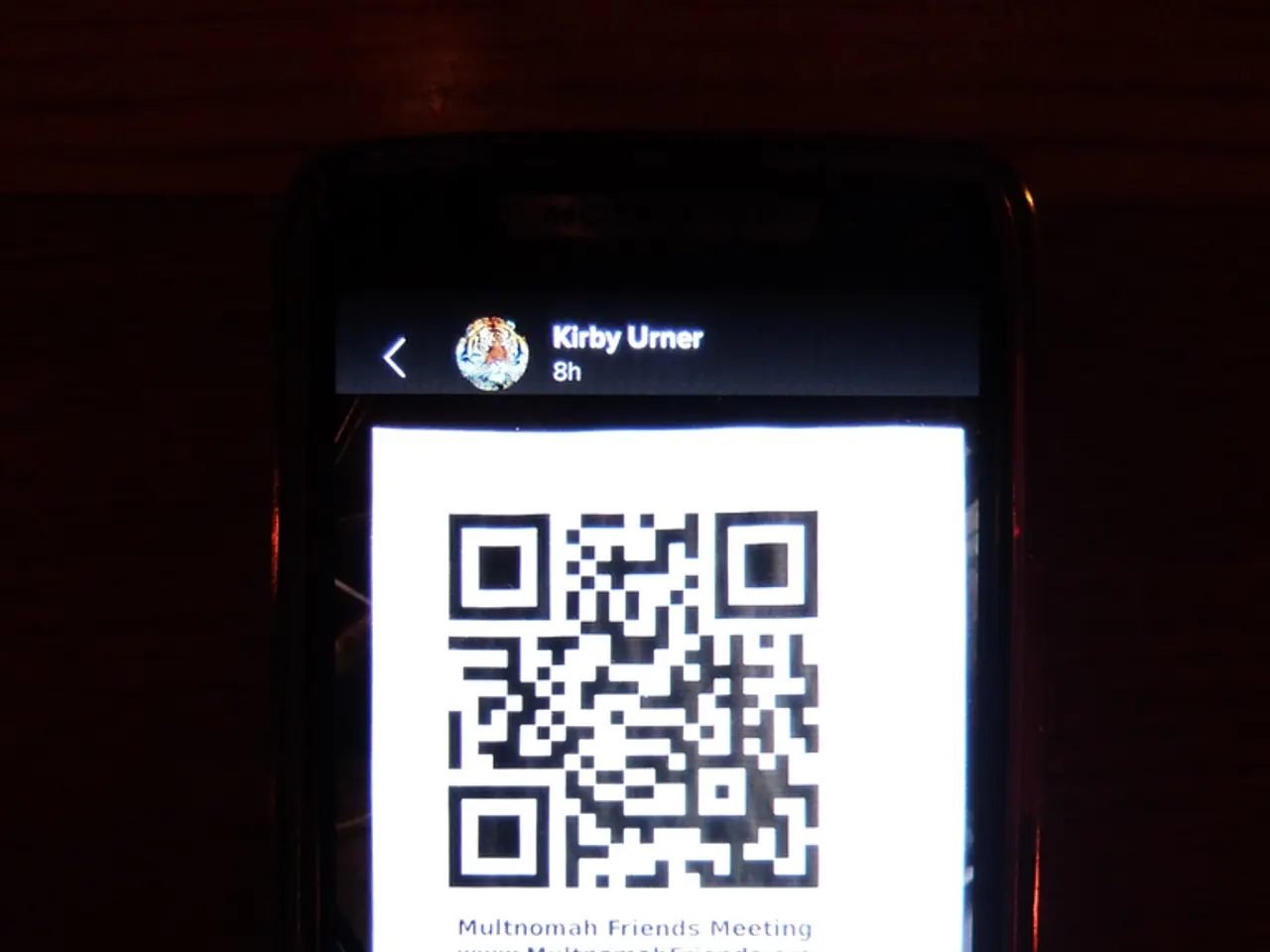Crafting a QR Code Link for Your Google Form in Simplicity
Are you looking to make your Google Forms more accessible and convenient for users? One effective solution is to create QR codes that link directly to your forms. In this article, we'll walk you through the steps to create a QR code for your Google Form and provide tips for making an effective QR code.
To start, create your Google Form as needed on Google Forms, either from scratch or a template. Click the 'Send' button, then the link icon (🔗) to generate a shareable URL. Copy this link to your clipboard.
Next, use a reliable QR code generator such as QR Code Generator, QRCodeChimp, Uniqode, QR Code Tiger, Adobe Express QR Code Generator, or Canva's QR Code Generator. Paste the copied Google Form URL into the generator and customize your QR code (optional but recommended) by changing colours, adding a logo, or modifying the frame for branding and better visibility.
After generating the QR code, save the image (usually PNG or SVG) and use it on printed materials, presentations, or digital channels. This method enables quick, contactless access to your Google Form via smartphone scanning, improving convenience and response rates.
### Tips for Making an Effective QR Code
1. Make it visually appealing and recognizable: Customize colours, add your logo, and use clear calls-to-action on or near the QR code to encourage scanning. 2. Ensure sufficient size and contrast: Print QR codes at a size large enough to be scanned easily (usually at least 2 x 2 cm) and with good contrast between the QR code and the background. 3. Use dynamic QR codes if possible: Dynamic QR codes allow you to edit the URL later, track scanning analytics, and manage your campaigns seamlessly. 4. Test the QR code: Always scan your QR code with multiple devices to ensure it directs properly to your form. 5. Make required questions mandatory on the form: To get complete responses, mark essential questions as “required” in Google Forms before generating your QR code. 6. Place QR codes strategically: Position them in locations with high foot traffic or where your audience will have time to scan, such as at event entrances, on flyers, or storefronts. 7. Provide instructions if needed: Some users might be unfamiliar with QR codes, so a brief note like “Scan here to fill out our feedback form” can help.
Following these best practices enhances the effectiveness, scan rate, and usability of your QR code-linked Google Form.
Stan Kats, a Professional Technologist and the COO and Chief Technologist for The STG IT Consulting Group in West Hollywood, California, co-authored this article. Stan Kats holds a BA in International Relations from The University of Southern California and offers enterprise-level expertise for small businesses and individuals. This article has been fact-checked to ensure the accuracy of any cited facts and has been viewed 36,460 times.
[1] [Tips for Making an Effective QR Code](https://www.qrcodepress.com/blog/tips-for-making-an-effective-qr-code/) [2] [How to Create a QR Code for Google Forms](https://www.lifewire.com/how-to-create-a-qr-code-for-google-forms-2626766) [3] [Creating a QR Code for Google Forms](https://www.wikihow.com/Create-a-QR-Code-for-Google-Forms) [4] [How to Create a QR Code for a Google Form](https://www.techjunkie.com/how-to-create-a-qr-code-for-a-google-form/) [5] [How to Create a QR Code for a Google Form in 5 Easy Steps](https://www.makeuseof.com/tag/how-to-create-qr-code-google-forms/)
- If you're interested in expanding your career or enhancing your lifestyle by incorporating sustainable living practices, consider adopting technology such as data and cloud computing to optimize energy usage at home-and-garden.
- For pet owners seeking to incorporate technology into their care routine, consider investing in tech products that aid in pet health monitoring or automated feeding systems.
- If you're passionate about pets and technology, you might consider a career in the tech industry, focusing on creating innovative solutions for pet-related problems.
- Incorporate technology into your existing home-and-garden to promote a more eco-friendly lifestyle, such as smart devices for energy management or intelligent watering systems for sustainable living.




